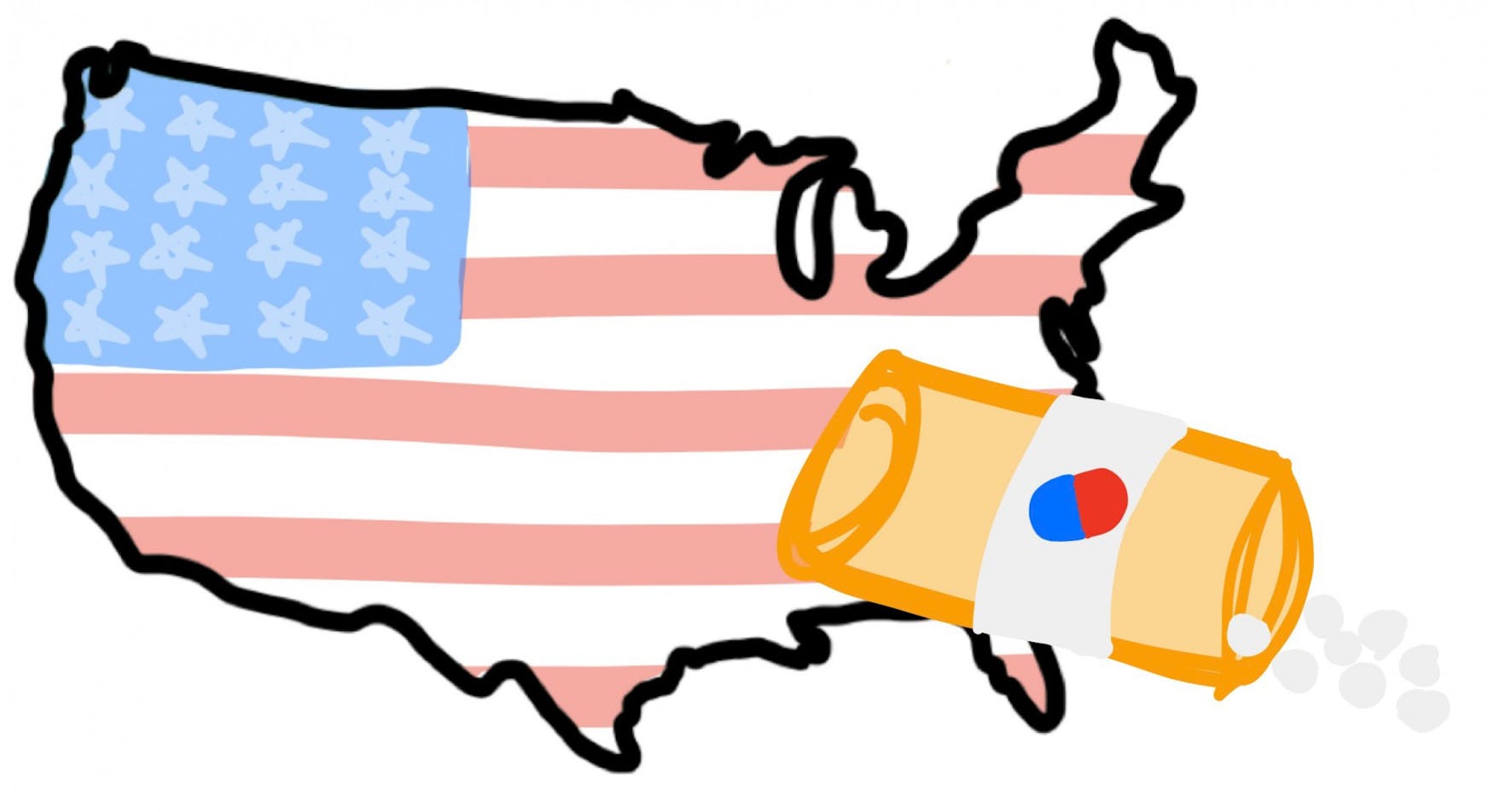The opioid crisis: more nuanced than you might think
If you were asked to describe a drug addict, what would you say? Would adjectives such as pale, skinny, desperate, uncontrollable, volatile and unpredictable cross your mind? Would you dare to expand your imagination and envision a drug addict who also has a family, a marriage, an education and a job? The single image of drug addicts that society has perpetuated does not always mirror the reality of addiction. Drug addiction affects individuals of every race, gender and socioeconomic status. Once it is clearly understood that drug addicts range in appearance, gender and wealth, available treatments and methods should also illustrate that point.
According to the Centers for Disease Control and Prevention, in 2017, more than 70,000 people died from drug overdoses. Additionally, 68% of those deaths involved a prescription or illicit opioid. On average, 130 Americans die every day from opioid overdose. While these numbers are tragic to read, it really does call into question the goal of the CDC and other drug overdose prevention organizations. Is the aim to prevent more deaths, or to further understand the complexity behind opioid addiction (both physically and mentally)? The answer to this question is not so clear.
With the statistics previously presented, it seems reasonable to first deal with the amount of opioid related deaths and then address longer term issues. While methods such as Naloxone and safe injection sites have come under scrutiny for being a “motivation” for drug addicts to continue their reckless behavior, I don’t share such a dismissive attitude. In an effort to reduce the amount of opioid related deaths, the Food and Drug Administration first approved the use of Naloxone for opioid overdoses intravenously in 1971. Naloxone has been heralded the “antidote” for opioid overdoses due to its fast acting properties. When injected intravenously, it takes two minutes to take effect. Naloxone works by inhibiting the attachment of opioid molecules to receptors in the central nervous system. In the 1990s, medical professionals began experimenting with different forms of Naloxone; but more specifically, forms that could be used safely in non-hospital settings. They created the most commonly used form of Naloxone today, which comes in the form of a nasal spray.
But is this quick-acting drug our solution to the opioid epidemic? While I do believe in the importance of Naloxone and greatly appreciate the amount of lives that it has brought back from the brink of death, I struggle to understand how it addresses the more serious problem at hand: addiction itself. After Naloxone is administered to the overdosed individual, they are not required to go to the hospital unless their motor and verbal skills are impaired after waking up. So if a hospital visit is not required, what is preventing this individual from using again? Not only does Naloxone block the opioid from attaching to its receptor, it also prevents a high and in some cases, withdrawal symptoms are experienced. This may trigger the individual to want to use again, even if they just experienced an overdose. Evidently, even though Naloxone performs “miracles,” it does not solve the underlying issue.
Another method proposed to deal with the opioid crisis are places known as safe injection sites. Safe injection sites are meant to be welcoming environments to drug addicts who are allowed to use drugs under medical supervision, in order to provide immediate help in case an overdose occurs. Safe injection sites have become a highly contested topic in the United States. Many politicians view it as a way to perpetuate drug use and some have gone as far as to label it a moral hazard. While it may not be the ideal solution to combating opioid addiction, it has offered drug addicts safe, clean spaces to recuperate from a high and seek medical attention if a more serious incident takes place. If the plan of attack is to decrease the amount of opioid related deaths first, safe injection sites are just a stepping stone to devising more concrete solutions.
While the United States government has not been a strong supporter for the creation of safe injection sites, Europe, Canada and Australia have taken the initiative and have opened up 120 safe injection sites combined. Safe injection sites in these areas have lead to a reduction of overdose deaths and transmission of bloodborne diseases. Additionally, overdose prevention facilities have become associated with fewer discarded needles in public areas and reduced overall litter.
While both methods presented in this article do not directly address addiction itself, they do shed light on the stigmatization that many drug addicts and former drug addicts face in society. The depictions of addiction in American society, whether it be through media platforms, television shows, movies, or even out of our own mouths, fail to illustrate the complexity of drug addiction. We can all have opinions about these individuals, but until we have tried to gain a better sense of who these individuals are, we will never be successful in combating opioid addiction. I never imagined that facilities would be created to allow drug addicts to continue using drugs under supervised conditions. When I first stumbled across this piece of information, I was quick to condemn the very concept. But as I researched more on safe injection sites, I realized that on the surface these facilities may be embracing controversial behavior — but when one delves deeper into the function of these sites, their attempts to provide safety and community among healthcare professionals and drug addicts are admirable. This may not entirely solve issues related to the opioid crisis, but it does give individuals struggling with addiction another opportunity to see value in a life where addiction, treatment and recovery is not so black and white.



Please note All comments are eligible for publication in The Justice.